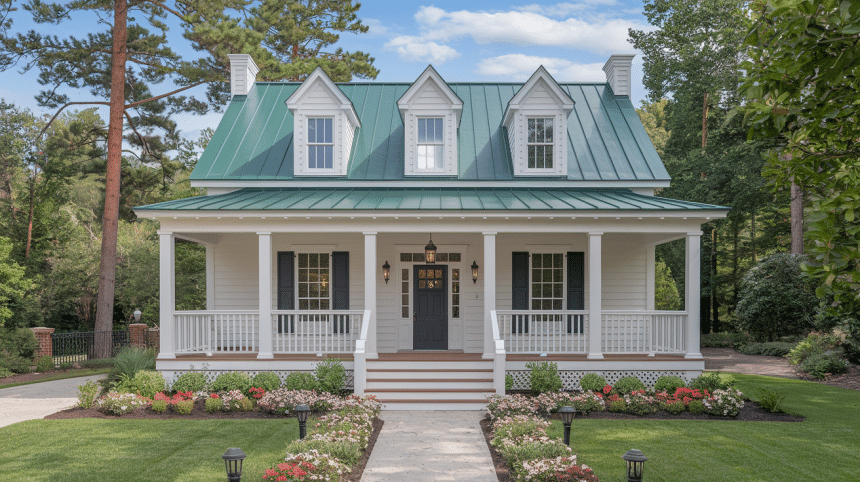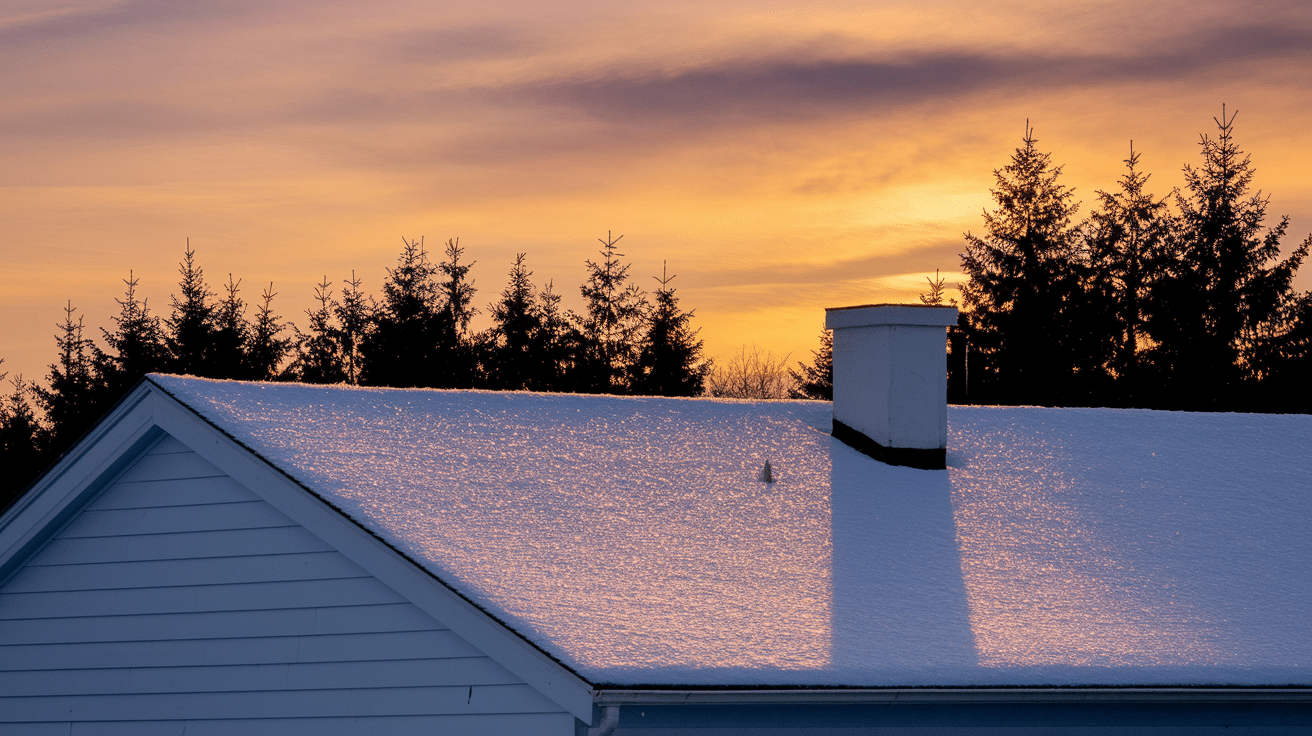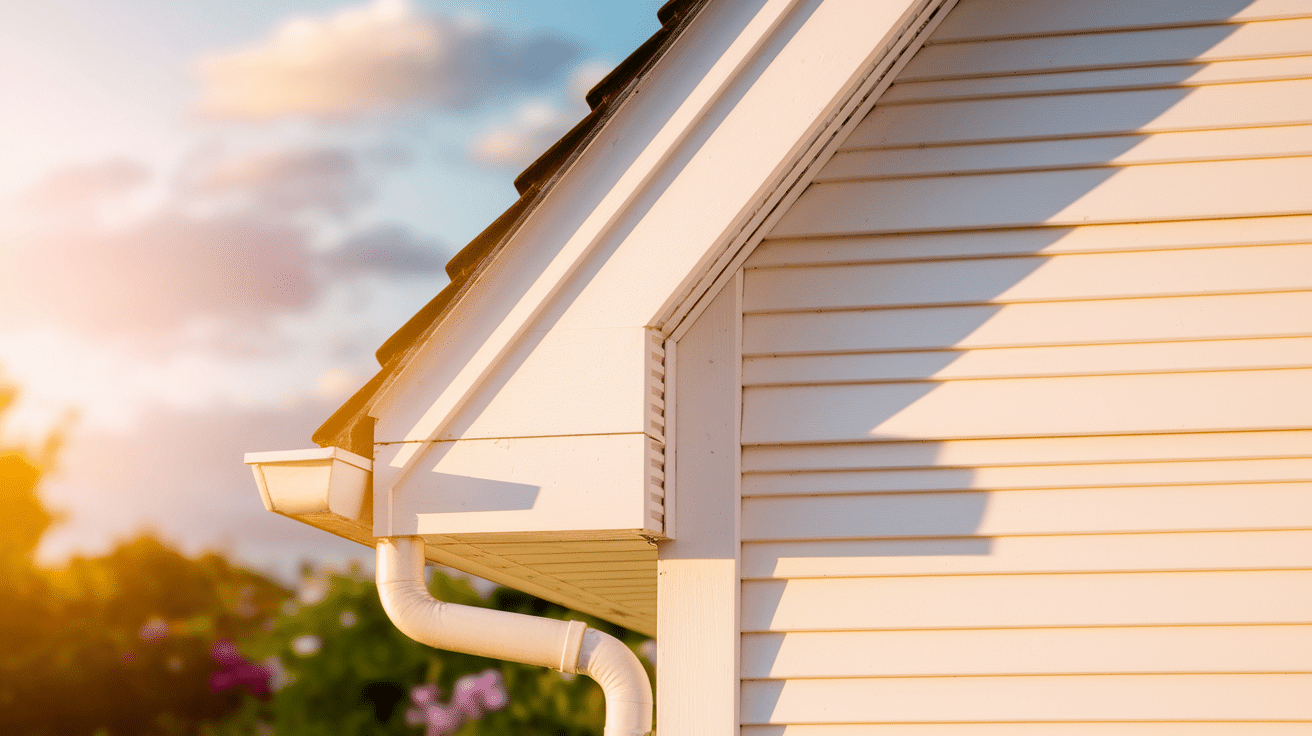Houses have many important exterior parts that work together to protect what’s inside.
The outside of a house isn’t just about looks—it serves key purposes like keeping rain out, providing safety, and helping with temperature control.
When you look at houses in your neighborhood, you might notice differences in roofs, walls, windows, and doors. Each of these parts has a specific job.
Some keep water away, others let light in, and some help you enter and exit. This blog will take you through the main parts of house exteriors and explain why each matters.
Understanding these basics can help you appreciate why houses are built the way they are. Let’s look at what makes up the outside of a home and why these parts are so important.
What are the Parts of a House?
The outside of a house consists of several essential components that serve both practical and visual purposes. The roof sits at the top, shielding the house from rain, snow, and sun.
Walls form the main structure, keeping the inside secure from the weather and providing privacy. Windows allow natural light to enter while keeping the elements out. Doors serve as entry and exit points, and the front door is often a focal point of the home’s appearance.
Other important parts include:
- The foundation, which supports the entire structure from below
- Gutters that collect and direct rainwater away from the house
- Siding or exterior wall coverings that protect walls from moisture
- Porches, patios, or decks that extend the living space outdoors
- Driveways that provide access for vehicles
- Walkways that guide visitors to the entrance
- Chimneys, vents, and exterior lighting that add both utility and style
Why is it Important to Know a House’s Exterior Parts?
Knowing about house exteriors helps you make smart choices about home care and maintenance. When you understand what each part does, you can check for problems before they become big issues.
For instance, if you know how gutters work, you’ll understand why keeping them clean prevents water damage to the foundation.
When you notice different house styles in your neighborhood, knowing the names of exterior features helps you describe what you see. You can point out the differences between types of windows or roof styles.
This knowledge also helps you appreciate why houses in different climates have specific features, like steep roofs in snowy areas or covered porches in rainy regions.
You’ll know what needs regular checking and what signs might indicate a problem that needs fixing.
Understanding Parts of the House’s Exterior
House exteriors combine numerous elements working together to protect the structure and add visual appeal.
Understanding these parts helps homeowners maintain their properties and spot potential issues before they become serious problems.
Let’s Look at all the external parts of the house!
Roof Structure
The roof is one of the most critical parts of the house exterior. It offers protection from the elements and contributes to the overall aesthetic of your home.
It’s composed of multiple parts that work together to maintain the home’s structural integrity and prevent damage from water, wind, and snow.
Chimney
Often seen as a prominent part of the roof, chimneys vent smoke and gases from your fireplace or furnace. They are usually constructed from bricks, metal, or concrete and play a key role in maintaining good air quality in the home by expelling potentially harmful substances.
Roof Hip
A hip roof forms where two roof slopes meet, typically at 90-degree angles. It is essential for providing stability, efficiently shedding rain and snow, and preventing water damage.
Roof Gable
This triangular section of the roof’s exterior is visible at the peak. It allows attic ventilation and helps regulate temperature and humidity levels, which can prevent mold and overheating.
Soffit
The soffit runs underneath the roof overhang, connecting the roof to the house’s walls. It’s responsible for ventilation and maintaining the home’s temperature and moisture levels. Soffits also improve a home’s appearance by covering less aesthetically pleasing structural elements.
Fascia
Located at the edge of the roof, fascia boards conceal rafters and provide support for the gutters. They help maintain a neat and polished exterior look for your home.
Sides of Home
The walls or sides of your house are equally important as the roof in terms of protection and visual appeal.
They provide the main barrier against external elements like wind, rain, and sun and contribute to the overall design and structure of the home.
Siding:
Siding is an outer covering that protects your home from the elements and plays a significant role in insulation. It comes in a variety of materials, such as vinyl, wood, metal, and cement, and is crucial for preventing moisture and pests from entering the home.
Frieze Board:
This decorative trim connects the eaves of your roof to the exterior walls of the home, adding a refined look while also protecting the overhang structure.
Corner Posts:
Corner posts are structural and decorative elements that provide additional strength to the exterior corners of the house. They also enhance the visual appeal, especially on Craftsman, Colonial, or Victorian-style homes.
Foundation:
The foundation is the base on which the entire house sits. It supports the weight of the structure and ensures stability. Foundations are often made of concrete or stone and vary in height depending on the house’s style and location.
Front of Home
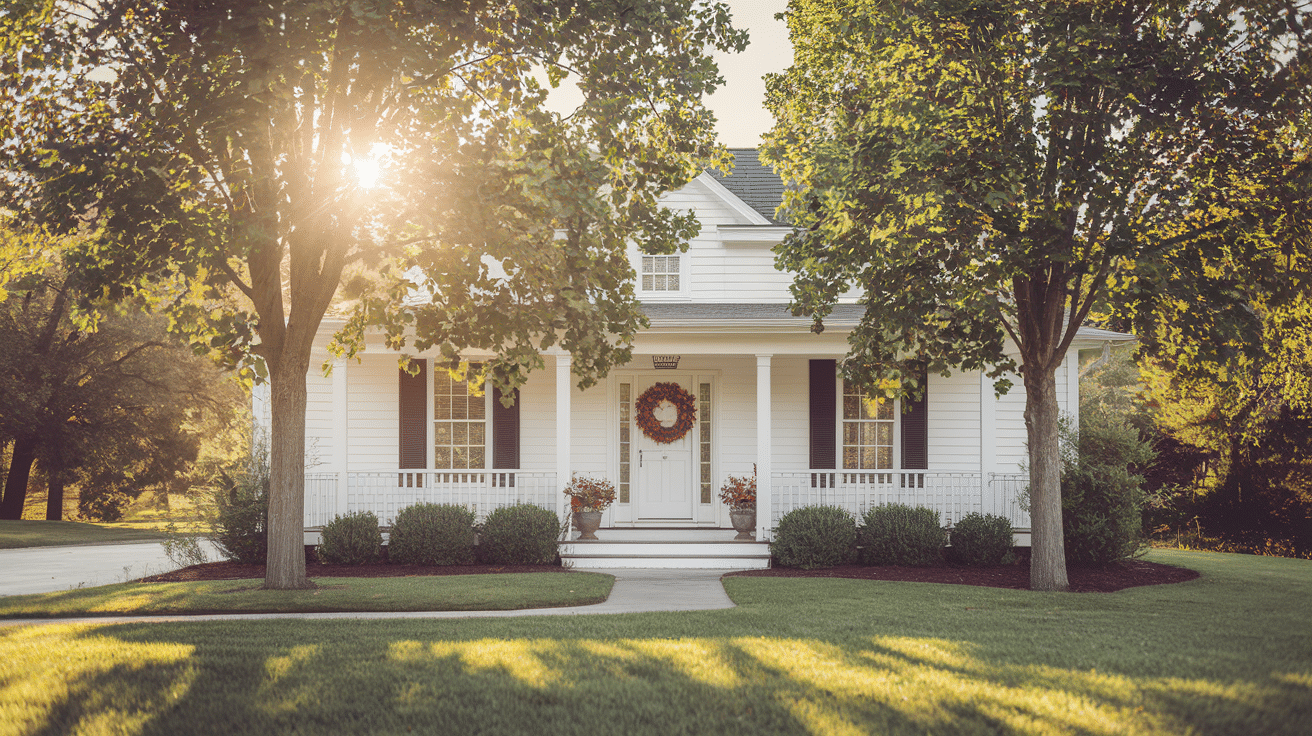
The front of the house is often the first impression visitors and passersby get of your home, so it’s important to make it inviting and well-maintained.
The key elements at the front of the house add curb appeal, which is essential for enhancing the value of your property.
Porch:
A porch provides a space between the indoors and outdoors, offering an inviting entry point into the home. It can be designed in various styles, from a traditional front porch to a modern, covered deck. Porches often serve as gathering spaces and contribute to the aesthetic charm of the home.
Steps:
External steps lead up to the porch or front entrance. They are especially useful in raised homes or homes with a higher foundation. Well-maintained steps not only provide safe access but also enhance the entrance’s visual appeal.
Columns:
Columns are a classic architectural feature that supports porches or balconies, especially in Greek Revival, Colonial, and Craftsman homes. They add an elegant and timeless look and contribute to the structural integrity and visual beauty of the front exterior.
Driveway:
A driveway is more than just a practical feature for parking. It enhances the curb appeal by providing a clean, organized entryway to your home. Driveways can be constructed from various materials like concrete, asphalt, pavers, or gravel to complement the style of the house.
Garage:
A garage offers convenient storage for vehicles and additional space for tools and outdoor gear. It can be attached or detached from the main structure and can be designed to blend seamlessly with the rest of the house’s exterior.
Other Outer Areas of House
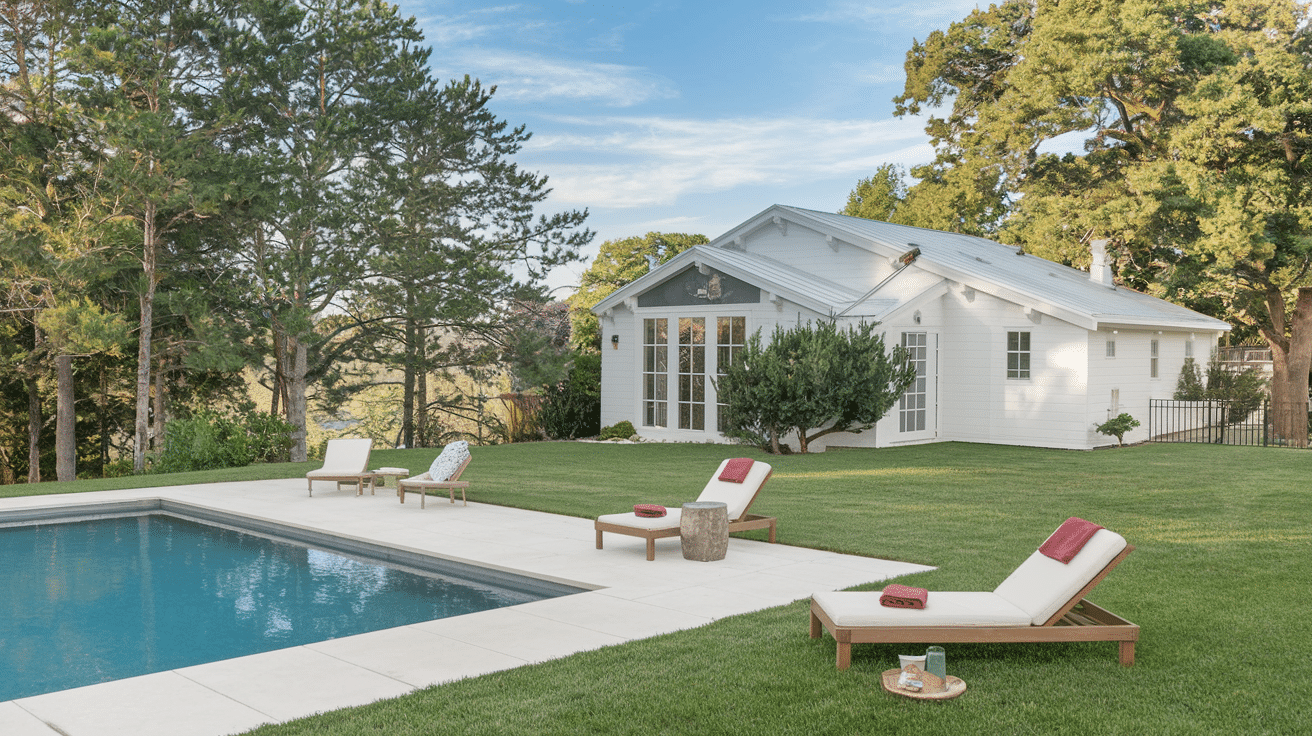
Certain areas of the house exterior require specialized attention due to their functional or aesthetic importance. These areas often need more maintenance or care to ensure they continue to serve their purpose effectively.
Gutters and Downspouts:
Gutters collect rainwater from the roof and direct it away from the home’s foundation. Downspouts are the pipes that carry the water away from the base of the house, preventing soil erosion and foundation damage.
Windows and Doors:
These not only allow natural light into your home but also contribute to its insulation, security, and overall aesthetic. Window and door frames should be properly sealed to prevent drafts and moisture infiltration.
Railings:
Railings are essential for safety, especially on stairs, balconies, and porches. They can be made from wood, metal, or glass and designed to complement your home’s style while providing stability and security.
Patio:
A patio is an outdoor living area typically made from concrete, stone, or wood. It offers a space for relaxation and outdoor dining. Patios can be simple or elaborate, with some featuring a partial or full roof for additional protection.
The Wrap-Up
The important parts of the house exterior are not just about looks; they play a huge role in keeping the house safe and comfortable.
From the sturdy roof that keeps you dry to the siding that protects against the weather, each part has a job to do.
Remember the little things, like gutters that help keep water away and windows that let in light and fresh air. Every piece, from the foundation to the front porch, helps make the house feel like home.
Keeping these parts in good shape means your house will look great, stay protected, and feel comfy for years to come.
So, pay attention to your house exterior and give it the love and care it deserves—it’ll thank you by staying strong and beautiful!

